Results 7,211 to 7,220 of 12091
Thread: Anandtech News
-
08-04-17, 02:38 PM #7211
Anandtech: Western Digital’s 3D TLC-Based SanDisk Ultra 3D SSDs Now Available
Western Digital has started to ship its SanDisk Ultra 3D drives based on 3D TLC NAND memory. The drives, which were formally introduced nearly two months ago, are identical in terms of hardware to the WD Blue 3D NAND SATA SSD, but come in different form-factors. As for pricing, Western Digital wants the SSDs to be affordable, which is why it sells the 1 TB models at below $300, in line with competiting drives from Crucial and Mushkin.
As reported, the SanDisk Ultra 3D as well as the WD Blue 3D NAND SATA are based on the Marvell 88SS1074 controller and use Western Digital’s 64-layer BiCS 3D NAND TLC memory. The drives take advantage of Marvell’s third-generation NANDeXtend LDPC-based ECC technology, but come with proprietary firmware developed in-house. The new products made in 250 GB, 500 GB, 1 TB and 2 TB configurations, but in different form-factors: the WD Blue 3D NAND SATA SSDs come in 2.5"/7mm and M.2-2280 form-factors, whereas the SanDisk Ultra 3D SSDs are only available in 2.5"/7mm DFF packaging.
Western Digital rates its 3D TLC NAND-based drives for 1.75 million hours MTBF, which is higher than their drives featuring planar TLC memory, but a bit lower than the MTBF number offered by some competing drives. Meanwhile, the TBW ratings of the drives range from 100 TBW for the 250 GB models to 500 TBW for the 2TB models. Being a bit cautious with reliability/endurance ratings is normal because companies typically do not want elevated expectations when they deal with a new type of memory.
From performance point of view, the new SanDisk and WD-branded drives and offer up to 560 MB/s sequential read speed and up to 532 MB/s sequential write speed (when pseudo-SLC cache is used to boost write speed), which is comparable to other mainstream SATA SSDs. As for random reads and writes, we are looking at 95K IOPS and 84K IOPS, respectively, again, in line with what competing drives offer.
Since all SATA-based drives offer more or less similar performance, pricing becomes one of the main features of SSDs with this interface. As expected, Western Digital charges $99 for the entry level SanDisk Ultra 3D model with 250 GB capacity. Meanwhile, the drives with 500 GB and 1 TB memory are available for $165 and $280 from Amazon. As for the WD Blue 3D NAND SATA SSDs, the company promises on its web site that they will be available in “late summer 2017”, presumably at similar price points.Specifications of WD Blue 3D NAND SATA and SanDisk Ultra 3D SSDs Capacity 250 GB 500 GB 1 TB 2 TB Form Factors: WD Blue 3D NAND SATA SSDs: 2.5" and M.2-2280
SanDisk Ultra 3D: 2.5"Controller Marvell 88SS1074 NAND Flash 64-layer 3D TLC NAND Sequential Read 550 MB/s 560 MB/s Sequential Write 525 MB/s 530 MB/s Random Read IOPS 95K Random Write IOPS 81K 84K Pseudo-SLC Caching Supported DRAM Buffer unknown Encryption unknown Power Management Slumber, Device Sleep, etc. Power Consumption Max Read Operating 2.2 W 2.05 W 2.55 W 3 W Max Write Operating 2.25 W 3.35 W 3.75 W 3.8 W Average Active Power 52 mW 60 mW Warranty 3 years MTBF 1,750,000 hours TBW 100 TB 200 TB 400 TB 500 TB
Buy SanDisk 1TB Ultra 3D NAND SATA SSD on Amazon.com
Related Reading:
- WD Blue 3D NAND SATA & SanDisk Ultra 3D SSDs Launched: 3D TLC NAND, SATA, Marvell
- Toshiba Announces TR200 Retail SATA SSDs With 3D NAND
- The Western Digital Black PCIe SSD (512GB) Review
- Western Digital Ships Client SSDs Based on 512 Gb 3D TLC NAND Chips
- ADATA Launches the SU700 SSD Range: Maxiotek MK8115, 3D TLC, Up to 960 GB
- Previewing Maxiotek's MK8115 SSD Controller: Can DRAM-less Drives Make The Cut?
- Mushkin Launches Reactor Armor 3D and Triactor 3D 2TB SATA SSDs: 3D NAND, SM2258
More...
-
08-05-17, 10:10 AM #7212
Anandtech: Intel to Discontinue First-Generation Thunderbolt 3 Controllers
Intel this week announced plans to discontinue its first generation Thunderbolt 3 controllers it launched in 2015, coming as a consequence of an industry transition from leaded to lead-free components. The company has had newer controllers in its fleet for quite a while, so it should not be a problem for PC makers to switch to them as they migrate to newer Intel platforms, such as Cannon Lake or Coffee Lake.
Intel on Thursday published plans to discontinue its DSL6340 and DSL6540 TB3 controllers it released in Q3 2015. Intel’s customers should place their orders on the chips by February 2, 2018, and the final shipments will be made by August 3, 2018. Replacing the DSL chips, Intel is advising its customers to instead use the JHL6340 and the JHL6540 controllers that were launched back in Q2 2016.
At first glance, there is no difference between Intel's DSL- and JHL-series Thunderbolt 3 controllers: both belong to the Alpine Ridge family and even their power consumption is the same: 1.7 - 2.2 W depending on port configuration. Intel has also confirmed that the DSL- and JHL-series TB3 controllers are similar in terms of features and functionality: 6340 supports one Thunderbolt 3 port, whereas 6540 supports two Thunderbolt 3 ports, every TB3 chip carries two DP 1.2 streams and so on.
Meanwhile, there is a difference between how different families of Intel's Thunderbolt 3 controllers are made. The DSL-series controllers use a lead-containing solder alloy, whereas the JHL-series use a lead-free solder alloy based on tin, silver and copper (such alloys are called SAC - Sn, Ag, Cu). The European Union restricts the use of lead (as well as many other hazardous materials) because its fumes increase risk of lung and stomach cancer, along with the other known risks of lead exposure and heavy metals in general. So, as it appears, Intel is EOLing its first-gen Thunderbolt 3 controllers as part of the broader effort to phase out the use of lead in electronics products.Intel's Thunderbolt 3 Controllers Codenamed Alpine Ridge DSL6240 DSL6340 DSL6540 JHL6340 JHL6540 Launch Date Q2 2016 Q3 2015 Q2 2016 TDP 1.2 W 1.7 W 2.2 W 1.7 W 2.2 W Number of Ports 1 2 1 2 DisplayPort 1.2 Package Size 10.7 × 10.7 mm Recommended Price $6.45 $8 $8.55 $8 $8.55
Related Reading:
- AKiTiO Displays Thunderbolt 3 to 10GBase-T Adapter
- LaCie Announces 2big Dock: 2-Bay TB3 DAS with Card Reader, USB-A and DisplayPort
- ASUS ZenBook 3 Deluxe UX490UA: Kaby Lake, 16 GB RAM, 1 TB SSD, TB3, 14" FHD, 2.4 lbs
- CES 2017: GIGABYTE’s Thunderbolt 3 to 8x USB 3 Dock
- LaCie Launches Rugged and d2 Thunderbolt 3 Storage Devices
- AKiTiO Introduces Node: Thunderbolt 3 eGFX Box for $299
More...
-
08-05-17, 01:54 PM #7213
Anandtech: Corsair’s ONE SFF PCs Get Upgraded: GeForce GTX 1080 Ti, 32 GB of RAM, NVM
Corsair on Thursday upgraded its Corsair ONE small form-factor gaming PCs, giving the systems a solid mid-generation upgrade. Relative to the original Corsair ONE, the new Corsair ONE desktops feature more powerful NVIDIA GeForce GTX 1080 Ti graphics cards, up to 32 GB of DDR4-2400 memory, and NVMe SSDs paired with mechanical HDDs. Meanwhile, pricing of the new systems will be higher compared to that of predecessors with top-of-the-range model available for $2899.99.
Corsair launched its SFF gaming PC this March, a bit later than many other producers of gaming hardware in this generation. To address a high end segment of the market and quickly gain market share, Corsair used everything it had up its sleeve into the Corsair ONE design, including its expertise in building computer cases with good ventilation, SFF PSUs, and custom liquid cooling. The use of an LCS and a properly vented PC case enabled Corsair to integrate rather powerful components inside: up to Intel’s Core i7-7700K as well as NVIDIA’s GeForce GTX 1080, with everything being overclocking-capable. Several months after the company began sales of its ONE-series desktops, the company is adding more powerful hardware options targeting an even higher-end segment of the market. The move puts Corsair’s ONE into the same category with boutique-built PCs, which is where some of Corsair’s rivals did not want to go.
Up until recently, Corsair offered three models of the Corsair ONE priced between $1799.99 and $2399.99 (the more powerful models were branded ONE PRO). The two new Corsair ONE PRO models come with Intel’s Core i7-7700K, NVIDIA’s GeForce GTX 1080 Ti (made by Corsair’s partner MSI and running at up to 100 MHz higher when compared to NVIDIA’s reference design), Corsair’s 480 GB NVMe SSD (previously Corsair’s ONE came with only SATA drives), as well as a 500 W 80 Plus Gold PSU. The new ONE PRO versions are are available for $2699.99 (with 16 GB of DDR4) and $2899.99 (with 32 GB of Vengeance LPX DRAM). Meanwhile, the Corsair ONE PRO priced at $2299.99 also got an SSD upgrade: it now comes with an NVMe drive.
From an architecture point of view, the new Corsair ONE PRO models are exactly the same as as their predecessors: they come in the same 12L aluminum chassis with a liquid cooling system featuring two loops, a Mini-ITX motherboard based on Intel’s Z270 PCH, a custom SFX PSU and only one exhaust fan. The only things that have changed are performance and prices. Since all Corsair’s ONE PRO systems use a bunch of standard desktop components, all existing desktops can be upgraded with new SSDs or specially qualified Corsair Vengeance LPX DDR4 DIMMs.Corsair ONE PC Specifications Model ONE ONE PRO CPU Core i7 7700 Core i7 7700K with liquid cooling GPU GeForce GTX 1070 GeForce GTX 1080 w/LCS GeForce GTX 1080 Ti /w LCS DRAM 16 GB DDR4-2400 32 GB DDR4-2400 Motherboard mini-ITX, Z270 chipset Storage SSD 240 GB SATA 480 GB NVMe 480 GB NVMe HDD 1 TB HDD 2 TB HDD PSU 400 W 500 W Warranty 2 years MSRP $1799.99 $2299.99 $2699.99 $2899.99
The new Corsair ONE systems are available in North America, Europe and Australia directly from the company or its partners. The upgrade kits for the existing Corsair ONE PCs will hit the market sometimes later.
Related Reading:
- CORSAIR ONE Gaming PC Released
- Corsair’s Bulldog 2.0 Gets Kaby Lake-Compatible Z270 Motherboard, New Cooler
- Corsair Releases Force MP500 SSDs: 3 GB/s, Phison PS5007-E7, MLC NAND
- Corsair Vengeance RGB DDR4 Memory Modules with LEDs Now on Sale
More...
-
08-07-17, 08:16 AM #7214
Anandtech: Unannounced AMD Ryzen Threadripper 1920 CPU in Motherboard Support Lists
Three leading makers of motherboards on Friday disclosed specifications of yet-unannounced AMD Ryzen Threadripper 1920 processor. The chip has 12 cores, works at slightly lower frequencies than the model 1920X, but also comes with a lower TDP. Unfortunately, it is unknown when the product is set to become available.
So far AMD has publicly introduced three microprocessors in its family of CPUs for super high-end desktops/workstations: the Ryzen Threadripper 1950X (16 cores, 3.4 GHz), the Ryzen Threadripper 1920X (12 cores, 3.5 GHz), and the Ryzen Threadripper 1900X (8 cores, 3.8 GHz base). AMD has never made any announcements regarding any other members in the Ryzen Threadripper family, or if three would be the limit - and it appears there is at least one more incoming. According to CPU support lists of the ASUS ROG Zenith Extreme, ASRock X399 Professional Gaming/X399 Taichi as well as GIGABYTE X399-Gaming 7, which were published this week, the 1920 (without an X) will also make a showing.
The Ryzen Threadripper 1920 will have 12 cores with simultaneous multithreading, a 3.2 GHz base frequency, a 3.8 GHz turbo frequency, and the full 32 MB of L3 cache. The differences between the 1920 and the 1920X are lower clock rates and AMD’s XFR speed boost on the 1920: typically Ryzen CPUs without the X have half the XFR.
Another difference is that the AMD Ryzen Threadripper 1920 will have a 140 W TDP, down from 180 W of the higher-end models, due to the lower frequency settings. This is for similar reasons as the 95W/65W TDP differences between the 1700X and 1700. The lower clock speed of the 1920 should be indicative of a slightly lower level of performance than the 1920X, and should mean that it will be cheaper than the 1920X ($799), but somewhat more expensive than the Threadripper 1900X ($549).
The fact that the Ryzen Threadripper 1920 is already supported by motherboards probably means that one can expect its launch in the coming weeks or months, but perhaps not right after the Ryzen Threadripper 1920X and the 1950X that land on August 10. Meanwhile, an interesting point to add here is that the CPU support lists from ASUS, ASRock and GIGABYTE do not indicate they support the 1900X with eight cores, which is announced to be on shelves on August 31st.AMD Ryzen SKUs Cores/
ThreadsBase/
TurboXFR L3 DRAM
1DPCPCIe TDP Cost Cooler TR 1950X 16/32 3.4/4.0 ? 32 MB 4x2666 60 180W $999 - TR 1920X 12/24 3.5/4.0 ? 32 MB 4x2666 60 180W $799 - TR 1920 12/24 3.2/3.8 ? 32 MB 4-Ch(?) 60 140W ? - TR 1900X 8/16 3.8/4.0 +200 ? 4-Ch(?) 60 ? $549 - Ryzen 7 1800X 8/16 3.6/4.0 +100 16 MB 2x2666 16 95 W $499 - Ryzen 7 1700X 8/16 3.4/3.8 +100 16 MB 2x2666 16 95 W $399 - Ryzen 7 1700 8/16 3.0/3.7 +50 16 MB 2x2666 16 65 W $329 Spire Ryzen 5 1600X 6/12 3.6/4.0 +100 16 MB 2x2666 16 95 W $249 - Ryzen 5 1600 6/12 3.2/3.6 +100 16 MB 2x2666 16 65 W $219 Spire Ryzen 5 1500X 4/8 3.5/3.7 +200 16 MB 2x2666 16 65 W $189 Spire Ryzen 5 1400 4/8 3.2/3.4 +50 8 MB 2x2666 16 65 W $169 Stealth Ryzen 3 1300X 4/4 3.5/3.7 +200 8 MB 2x2666 16 65 W $129 Stealth Ryzen 3 1200 4/4 3.1/3.4 +50 8 MB 2x2666 16 65 W $109 Stealth
Gallery: Specs of Unannounced AMD Ryzen Threadripper 1920 Get Published



Related Reading- AMD Ryzen Threadripper 1950X and 1920X: We’re Allowed To Show Pictures Now
- The AMD Zen and Ryzen 7 Review: A Deep Dive on 1800X, 1700X and 1700
- The AMD Ryzen 5 1600X vs Core i5 Review: Twelve Threads vs Four at $250
- The AMD Ryzen 3 1300X and Ryzen 3 1200 CPU Review: Zen on a Budget
- AMD Launches Ryzen PRO CPUs: Enhanced Security, Longer Warranty
- How To Get Ryzen Working on Windows 7 x64
- AMD Launches Ryzen: 52% More IPC, Eight Cores for Under $330
Sources: Motherboard Makers via Hexus.
More...
-
08-07-17, 08:16 AM #7215
Anandtech: Toshiba Announces SAS And NVMe Enterprise SSDs With 3D TLC NAND
Toshiba is continuing their series of product announcements featuring their new 64-layer 3D TLC NAND flash memory. With the client SSD for OEMs segments covered by the XG5, BG3 and SG6 and with the TR200 covering the retail SATA market, Toshiba now turns to the enterprise SSD market with a new generation of NVMe and SAS SSDs. The PM5 SAS SSD and CM5 NVMe SSD are based on a new generation of SSD controllers that use the same architecture for both NVMe and SAS, allowing the two product families to share several key features.
The PM5 SAS SSD sets new records by offering capacities of up to 30.72 TB in a 2.5" form factor, and sequential transfer speeds of up to 3350 MB/s (reads) thanks to support for four-port SAS MultiLink. SAS has always supported dual-port drives, with the two ports either used in a failover configuration for high availability or bonded for high throughput. When SAS devices were still at 6Gbps there was serious discussion of going beyond two ports per drive and backwards-compatible connectors were standardized, but 12Gbps SAS won out as the preferred next step toward higher throughput. Now that NVMe SSDs using four or more PCIe lanes are providing heavy competition, MultiLink SAS has been dusted off and is being implemented on a SSD for the first time. Existing backplanes will need to be upgraded to physically provide the extra lanes, but otherwise the SAS ecosystem is ready to support 4-port MultiLink drives more or less transparently, since multi-lane/multi-path IO support is already ubiquitous.
The CM5 enterprise NVMe SSD will only offer capacities of up to 15.36TB but higher performance than its SAS cousin, including up to twice the random read performance. It supports the latest and greatest NVMe features: scatter-gather lists and Controller Memory Buffer (CMB) for more efficient NVMe over Fabrics use, multiple namespaces and SR-IOV virtualization, and NVMe Management Interface. The CM5 is also previewing a new Persistent Memory Region (PMR) feature that is on track for standardization. The PMR feature appears be an extension of the Controller Memory Buffer feature. CMB allows a NVMe SSD to expose a portion of its DRAM for general-purpose use by other parts of the system. The most common use case so far is with NVMe over Fabrics (NVMeoF) where an RDMA-capable NIC can store data and queued commands straight into the SSD's DRAM with peer-to-peer DMA, eliminating a round-trip to the CPU's DRAM. PMR envisions a different use for the SSD's DRAM by ensuring the buffer's contents are saved to the flash in the event of power loss. This allows the host system to treat the buffer in much the same manner as a NVDIMM providing battery-backed DRAM. The performance of a single drive's PMR won't be competitive with a NVDIMM due to a PCIe x4 link being much slower than a DDR4 bus, but it will provide a small pool of persistent memory that is faster than the drive's block storage accessed through NVMe.
Both the PM5 and CM5 implement their host interface's respective standard for streams support, allowing I/O commands to be tagged according to which task they originate from. This allows the SSD to write each task's data to separate parts of the drive, which makes it easier to offer higher and more consistent performance and also can lead to much lower write amplification as data with similar lifetimes is physically grouped together instead of being interleaved within the same erase blocks. The PM5 and CM5 also both support TCG encryption and the relatively new Sanitize command to securely erase not just the flash but all other buffers on the drive, which was not ensured by previous erase methods.
The PM5 SAS SSD will be available in capacities from 800GB to 30.72TB, with endurance ratings of 1, 3, 5 and 10 Drive Writes Per Day (DWPD). The CM5 NVMe SSD will be available in capacities from 400GB to 15.36TB with endurance ratings of 1, 3 and 5 DWPD. Both drives use Toshiba's 64-layer TLC BiCS3 3D NAND and are currently sampling to select OEM customers. The timeline for wider availability has not been announced. The SSDs will be on display this week at Flash Memory Summit in Santa Clara, CA.
More...
-
08-07-17, 12:23 PM #7216
Anandtech: Microsoft to Enable Eye Control in Windows 10
Microsoft CEO Satya Nadella this past week announced plans to add support for eye tracking to one of the upcoming Windows 10 versions, in a bid to enable disabled people to use computers. The head of Microsoft did not say when the company intended to do this, but only said that the tech would require a compatible eye tracker, such as the Tobii 4C, which is currently supported by some games and may be used to control a Windows-based PC when appropriate software is installed.
According to an MSDN blog post, the Eye Control feature has been in development for quite some time — the initial idea to integrate something like that was proposed in 2014. At present, the capability is in beta and interested people can participate in early testing and provide feedback using the Windows Insider program. Microsoft positions the Eye Control primarily as a way to make PCs more accessible to people with disabilities, such as ALS.
Microsoft does not disclose many technical details about its Eye Control feature, but only says that the Tobii Eye Tracker 4C will be one of the compatible eye-tracking devices. Meanwhile, the Tobii 4C is a rather sophisticated piece of hardware that can only be purchased separately (€159 in Europe) for now. By contract, Tobii's previous-gen sensor called EyeX is integrated into various displays and laptops from Acer, Alienware and MSI.

The Tobii 4C is equipped with near-IR 850 nm diodes and an RGB camera to track eye positions, gaze points and head position. With the 4C, Tobii not only switched IR sensors in a bid to get rid of red lights, but also increased polling rate of the device to 90 Hz (up from 60 - 75 Hz on the previous-gen EyeX), which theoretically reduces eye to application latency from 15±5 ms on the previous gen model. The latter factor is important for comfortable interaction with applications and if we are talking about a prolonged usage of a PC by a disabled person, comfort (actually, more like lack of eye fatigue) becomes crucial. Back to hardware. Another important feature of the Tobii 4C is its specially designed EyeChip ASIC (also used in the EyeX) that reduces CPU load and has a built-in “eye-tracking algorithm”. Tobii admits that eye tracking may take up to 10% of a high-end CPU time (1% with the EyeChip), so it is not really a demanding task. However, if hardware processing also reduces input latency, this may be an important factor. After all, Microsoft chose the Tobii platform to develop its Eye Control feature for a reason. The software giant needed a polished-off solution (already compatible with numerous games) that enables certain level of interaction with Windows out-of-the-box. Another advantage of the Tobii could be its hardware-based processing and a relatively low input latency (still 15 ms on the EyeX does not seem very low).
Without actual data at hand, it is unclear what Microsoft’s Eye Control feature is going to require. Microsoft wants to make Windows 10 accessible to everyone, so it is highly unlikely that an expensive eye-tracking device will be mandatory. Nonetheless, it is obvious that a typical webcam will not be enough for this feature.
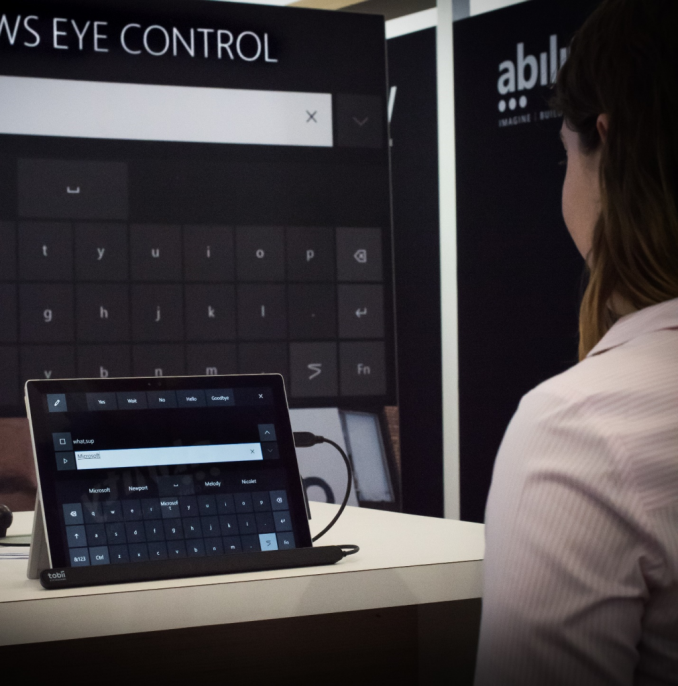
Related Reading:
More...
-
08-07-17, 12:23 PM #7217
Anandtech: Intel Finalizes Skylake-X Processor Specifications: 18-Cores, 4.4 GHz Turb
When Intel launched its new high-end desktop platform a few weeks ago, we were provided with Core-X CPUs from quad cores on the latest Kaby Lake microarchitecture, and 6/8/10 core parts on the Skylake-SP microarchitecture derived from the enterprise line and taking a different route to how the cache was structured over Skylake-S. At the time we were told that these latter parts would be joined by bigger SKUs all the way up to 18 cores, and up to $2000. Aside from core-counts and price, Intel was tight lipped on the CPU specifications until today.
Skylake-X goes HCC
The original Skylake-X processors up to 10 cores used Intel’s LCC silicon, one of the three silicon designs typically employed in the enterprise space, and the lowest core count. The other two silicon designs, HCC and XCC, have historically been reserved for server CPUs and big money – if you wanted all the cores, you had to pay for them. So the fact that Intel is introducing HCC silicon into the consumer desktop market is a change in strategy, which many analysts say is due to AMD’s decision to bring their 16-core silicon into the market.
Both the new HCC-based processors and the recently released LCC-based processors will share the same LGA2066 socket as used on X299 motherboards, and all the processors will differ in core count, with slight variations on core frequencies, TDP and price.
The Skylake-X line-up now looks like:
Along with this, we have several release dates to mention.Skylake-X Processors 7800X 7820X 7900X 7920X 7940X 7960X 7980XE Silicon LCC HCC Cores / Threads 6/12 8/16 10/20 12/24 14/28 16/32 18/36 Base Clock / GHz 3.5 3.6 3.3 2.9 3.1 2.8 2.6 Turbo Clock / GHz 4.0 4.3 4.3 4.3 4.3 4.3 4.2 TurboMax Clock N/A 4.5 4.5 4.4 4.4 4.4 4.4 L3 1.375 MB/core 1.375 MB/core PCIe Lanes 28 44 44 Memory Channels 4 4 Memory Freq DDR4 2400 2666 2666 TDP 140W 140W 165W Price $389 $599 $999 $1199 $1399 $1699 $1999
- The 12-core Core i9-7920X will be available from August 28th
- The 14-18 core parts will be available from September 25th (my birthday…)
On the specification side, the higher-end CPUs get a kick up in TDP to 165W to account for more cores and the frequency that these CPUs are running at. The top Core i9-7980XE SKU will have a base frequency of 2.6 GHz but a turbo of 4.2 GHz, and a Favored Core of 4.4 GHz. I suspect the turbo will be limited to 2-4 cores of load, however Intel has not listed the ‘all-core turbo’ frequencies which are often above the base frequencies, nor the AVX frequencies here. It will be interesting to see how much power the top SKU will draw.
One question over the launch of these SKUs was regarding how much they would impinge into Intel’s Xeon line of processors. We had already earmarked the Xeon Gold 6154/6150 as possible contenders for the high-end CPU, and taking the price out of the comparison, they can be quite evenly matched (the Xeons have a lower turbo, but higher base frequency). The Xeons also come with multi-socket support and more DRAM channels, at +60% the cost.
Comparing against AMD’s Threadripper gives the following:
We fully expect the review embargoes to be on the launch dates for each CPU. Time to start ringing around to see if my sample was lost in the post.Comparison Features Intel Core
i9-7980XEIntel Core
i9-7960XAMD Ryzen
Threadripper 1950XPlatform X299 X299 X399 Socket LGA2066 LGA2066 TR4 Cores/Threads 18 / 36 16 / 32 16 / 32 Base/Turbo 2.6 / 4.2 / 4.4 2.8 / 4.2 / 4.4 3.4 / 4.0 GPU PCIe 3.0 44 44 60 L2 Cache 1 MB/core 1 MB/core 512 KB/core L3 Cache 24.75 MB 22.00 MB 32.00 MB TDP 165W 165W 180W Price $1999 $1699 $999
Related Reading- The Intel Skylake-X Review: Core i9 7900X, i7 7820X and i7 7800X Tested
- The Intel Kaby Lake-X i7 7740X and i5 7640X Review
- The Intel Core i7-7700K (91W) Review
- The Intel Core i5-7600K (91W) Review: The More Amenable Mainstream Performer
- The Intel Core i3-7350K (60W) Review: Almost a Core i7-2600K
More...
-
08-08-17, 10:03 AM #7218
Anandtech: Seagate Refreshes Enterprise SSDs With 3D NAND
At Flash Memory Summit this week, Seagate is showing off their latest enterprise SSDs and previewing upcoming developments. Seagate is also introducing a new branding strategy to unify their enterprise SSD product lines under one numbering scheme.
The new NVMe SSDs will be branded Nytro 5000 series. In this segment, the old Nytro XM1440 is being replaced by a Nytro 5000 series that brings few hardware changes other than the update to 3D NAND flash. The Nytro 5000 is still a M.2 22110 card with power loss protection and maximum power of 8.25W, roughly the practical limit for M.2 SSDs without extreme cooling. Compared to the Nytro XM1440, the Nytro 5000 series roughly doubles random write performance, but it's still a read-focused product. Capacities now range from 400GB to 1.92TB, providing two write endurance/overprovisioning levels at each of three raw capacity points. The Nytro 5000 is currently sampling and will be in mass production in Q3 of 2017.
The 1200.2 family of SAS SSDs is being replaced by the Nytro 3000 series. With a combination of dual-port SAS support and the higher power limits enabled by the 2.5" form factor, the Nytro 3000 can offer similar performance to the Nytro 5000, but also provides much higher capacities. The Nytro 3000 series will include capacities from 400GB to 1TB in a 2.5" 7mm form factor, and capacities up to 15TB in a 15mm thick drive. The Nytro 3000 is also Seagate's first drive to implement Write Streams support for lower write amplification and more consistent performance. The Nytro 3000 will begin sampling in Q4 of 2017 and enter mass production in the first quarter of 2018.
Seagate's new enterprise SATA SSDs will be the Nytro 1000 series, but they are not being formally announced yet. Instead, Seagate's third new SSD being exhibited here at Flash Memory Summit is a technology demonstration that combines elements of two different demos from last year. Seagate has built an ultra-high capacity 64TB SSD using 3D TLC NAND. Unlike last year's 60TB SSD demo, this won't be constrained by a SAS interface and instead uses a PCIe 3 x16 interface. Internally, the 64TB SSD uses eight M.2 SSDs each with a PCIe 3 x4 link to the drive's built-in PCIe switch. Last year's quad-M.2 demo didn't include a PCIe switch and thus relied on the host to provide a x16 slot that supported bifurcation into four x4 ports. This year with new server CPU platforms offering far more PCIe lanes, that lack of a PCIe switch is less of a limitation, but it still reduces the potential viability as a product. The new 64TB NVMe drive can not only operate in any PCIe x16 slot (even those that are electrically only x8 or narrower), it can come much closer to saturating the x16 link. The M.2 SSDs that make up the 64TB drive cannot saturate their own x4 links, but in aggregate they can deliver sequential read speeds of 13GB/s at QD8 and random reads of 2M IOPS at QD64.
More...
-
08-08-17, 11:09 AM #7219
Anandtech: Micron Introduces 9200 Series Enterprise NVMe SSDs
Today at Flash Memory Summit, Micron is announcing their next generation of high-end enterprise NVMe SSDs. The new Micron 9200 series is the successor to last year's 9100 series and uses Micron's 32-layer 3D TLC NAND flash and a new generation of Microsemi SSD controllers. As with the 9100 series, Micron's 9200 series covers a wide range of capacities, but adds a third tier of write endurance: ECO joins the PRO and MAX tiers, respectively aimed at read-heavy workloads, mixed workloads, and write-intensive workloads.
The Micron 9200 series will be available in either 2.5" U.2 form factor or PCIe add-in card. Thanks to the new generation of SSD controllers, the add-in card version can now use a PCIe x8 interface and offer significantly higher sequential access performance than the U.2 version, with read speeds reaching up to 5.5GB/s. The range of capacities is also far different from the 9100 series, which topped out at 3.2TB for the 9100 PRO and 2.4TB for the 9100 MAX. The 9200 MAX now offers up to 6.4TB, the PRO up to 7.68 TB, and the new 9200 ECO is available in 8TB and 11TB capacities.
Micron's enterprise SATA SSD lineup moved to 3D TLC NAND early this year with the introduction of the 5100 series. Micron's 7100 series of lower-power enterprise NVMe SSDs has not been replaced with a 3D NAND-based successor and it appears Micron is phasing out the current generation.
More...
-
08-08-17, 09:10 PM #7220
Anandtech: Intel to Announce 8th Generation Core Processors on August 21st
Today Intel has revealed that the company will be announcing their 8th generation Core processors and associated architecture on August 21st. This announcement of an announcement comes as the company is in the middle of launching the rest of the Core i9 Skylake-X processors, with the announcement essentially set to fill out the rest of the year for the company’s CPU product portfolio.
Intel has in recent times settled into a fairly consistent and roughly yearly release cadence for the Core processor family. Other than Broadwell’s delay, Intel has typically launched a new processor in the summer/fall timeframe for the past half-decade. And as early as an investor meeting in February, the company revealed that we should expect the 8th generation processors in the second half of this year.
Officially, Intel has not published any Core architecture roadmaps in some time, but what is widely expected to be revealed on the 21st is Intel’s Coffee Lake processors. Coffee Lake is a further evolution of Skylake and Kaby Lake, and like its predecessors, the company has already been confirmed that these 8th generation processors will also be made on their 14nm process. Meanwhile back at Computex Intel was talking up a sizable 30% performance gain in SYSmark, though based on Intel’s associated demonstration it looks like that claim is primarily about laptops. Otherwise, what little we know of Coffee Lake is that it will require a new chipset, and desktop processors will not work in existing 200-series motherboards.
The big question, besides official specifications, will be around what launches when. Whether Intel will lead with mobile, lead with desktop, or even launch both at the same time. Intel has traditionally led with mobile, and as a recently as 7th generation Core (Kaby Lake) that was still the case. On the other hand (and rumors aside), the fact that we’ve already seen motherboard manufacturers accidentally confirm information about desktop processors solidly points to desktop parts sooner than later, an interesting turn of events given the still-ongoing Skylake-X launch.
Otherwise, this launch may give us a hint of what to expect for the structure of future Intel processor launches. An announcement like this would normally be made at IDF, which would have taken place the week of August 14th had Intel not discontinued it this year. Intel is plenty capable of launching products outside of IDF (see: Skylake-X and Kaby Lake-X), but the loss of IDF changes things significantly. On the one hand, they're no longer under the gun to present something big to the amassed press, investors, and developers. On the other hand, they don't have those same masses conveniently gathered in one location. So it will be interesting to see how Intel handles this launch now that it's a lower-key event.
Finally, given this timing, it remains to be seen how Intel will work their forthcoming first generation 10nm Cannonlake parts into the rotation. Cannonlake was originally expected this year, though it’s anything but clear if that’s still going to happen. However even an early 2018 launch would come only a handful of months after Coffee Lake, and with initial 10nm yields pushing a practical need to start on small die products (e.g. U/Y processors), it’ll be interesting to see how Intel structures their product lineup for these back-to-back transitions.
More...
Thread Information
Users Browsing this Thread
There are currently 13 users browsing this thread. (0 members and 13 guests)




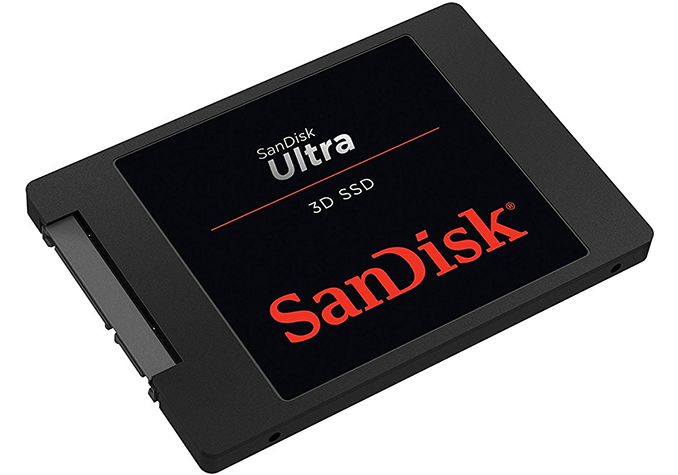

 Quote
Quote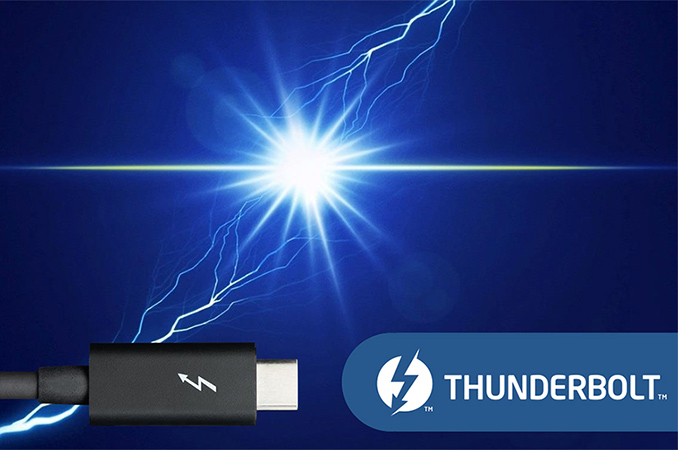
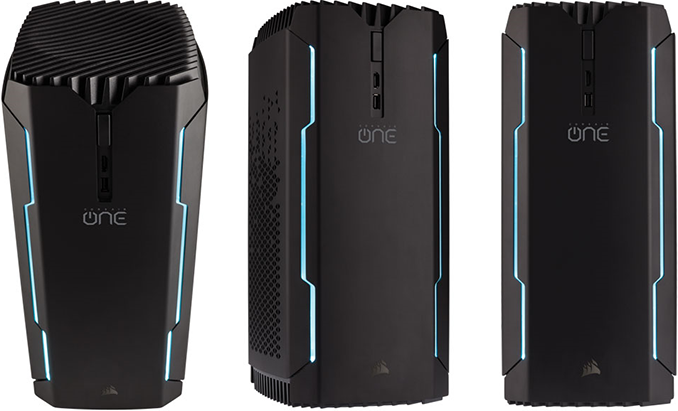
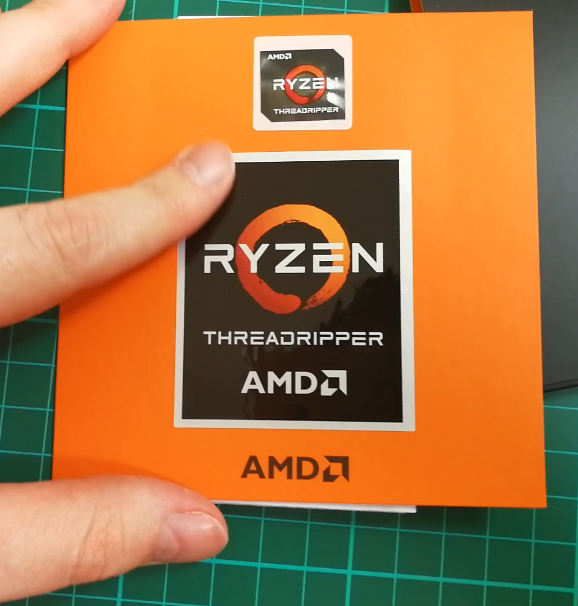
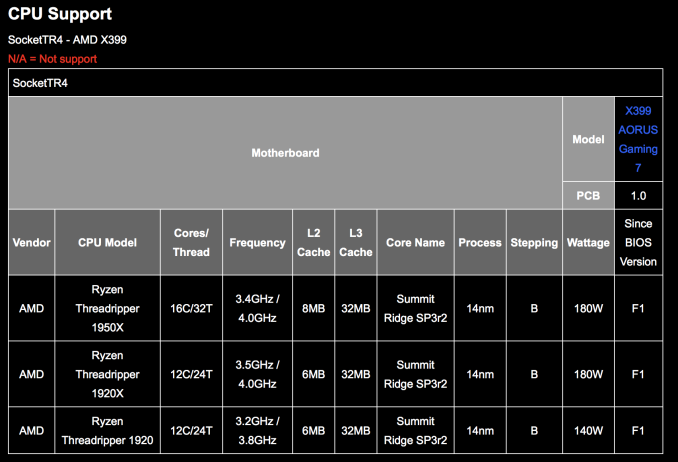
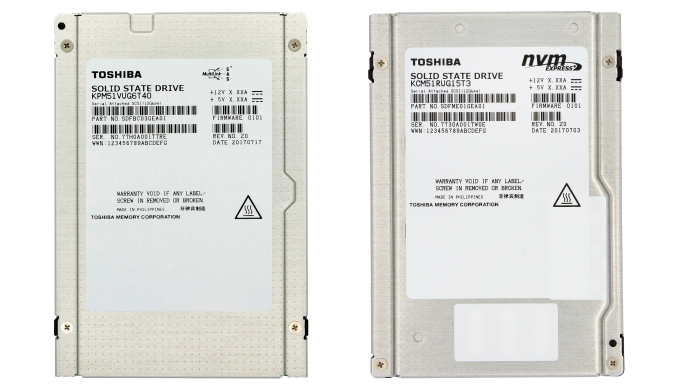


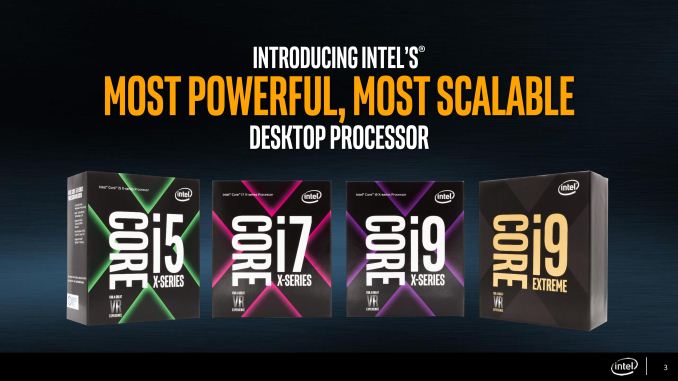

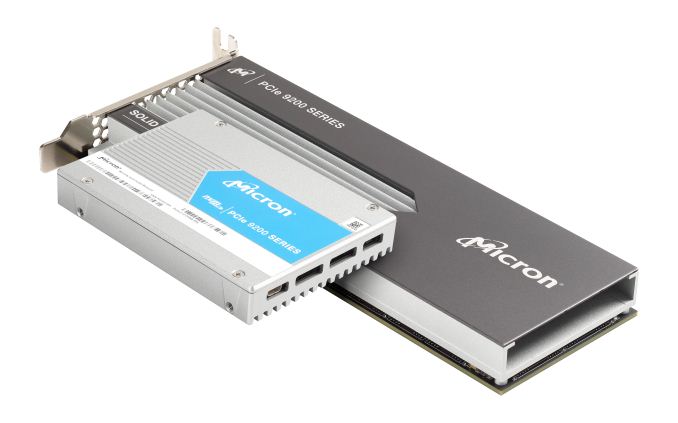

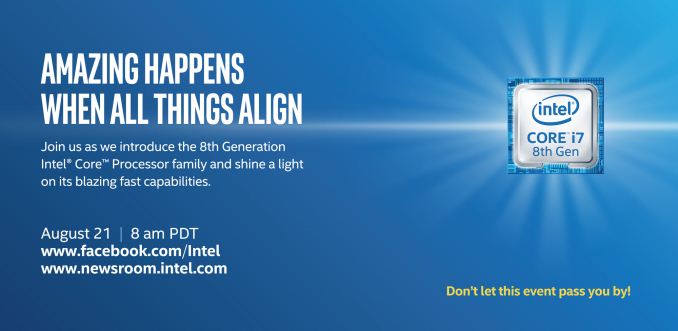
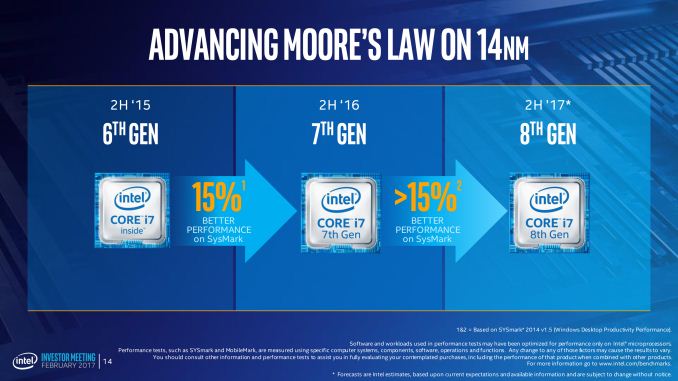
















Bookmarks